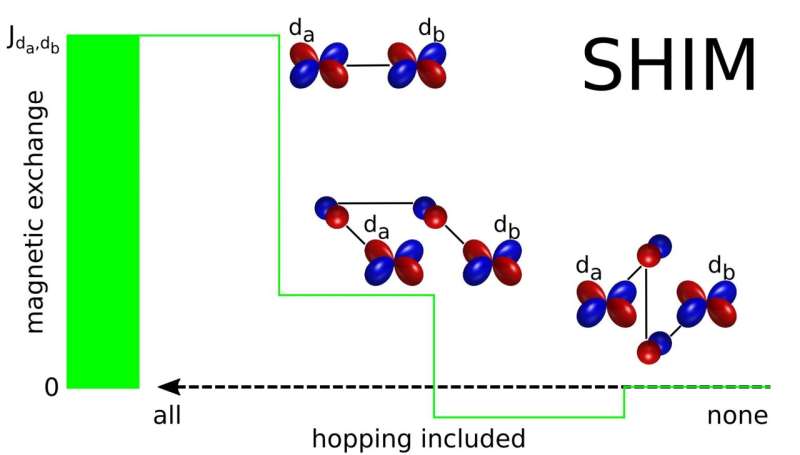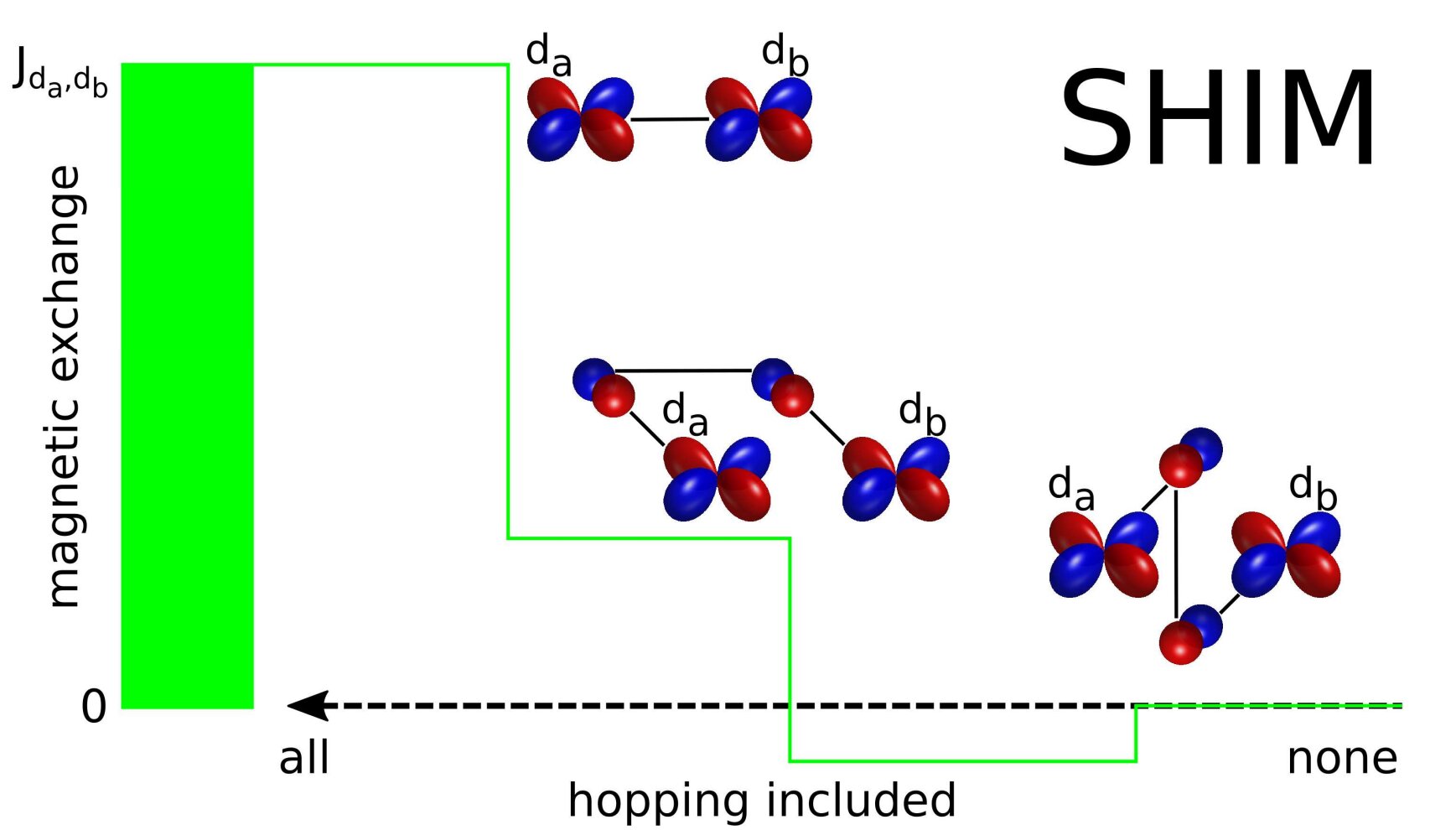
Credit: University of Antwerp
We know magnetism as a fundamental force of nature that plays a crucial role in both the natural world and modern technology. It governs the behavior of materials at the atomic level and is essential for the functioning of countless devices in our everyday life, including data storage, sensing, wireless charging, sound recording and playing systems, and more.
Understanding the origins of magnetism—deeply rooted in quantum mechanics—enables scientists and engineers to manipulate magnetic properties for further innovative applications and emerging technologies.
On that quest, a team of physicists of the COMMIT research group at the University of Antwerp in Belgium has developed a methodology that reveals the microscopic origins of magnetism in materials, articularly demonstrated in selected atomically thin systems, better known as 2D materials.
The advance, published in Physical Review Letters, offers an unprecedented insight into how magnetic interactions arise and evolve at the quantum level.
Magnetism originates from the quantum mechanical properties of electrons, specifically their intrinsic spin and orbital angular momentum. Within atoms, electrons occupy orbitals—regions of space defined by quantum numbers—such as s, p, d, and f orbitals, each with specific shapes and capacities. Magnetism arises primarily from unpaired electrons in the d and f orbitals, which are more spatially extended and allow for stronger interactions between atoms.
In most elements, electrons are spin-paired within these orbitals, canceling out their magnetic moments. However, in elements like iron, cobalt, nickel, chromium, and rare-earth metals like gadolinium, there are partially filled d (or f) orbitals with unpaired electrons, creating a net atomic magnetic moment. Electrons in partially filled d or f orbitals can occasionally delocalize, meaning they are not strictly bound to a single atom. Instead, they can “hop” between neighboring atoms’ orbitals, often through overlapping orbitals or via an intermediary atom.
This hopping is governed by quantum tunneling and is sensitive to the energy difference between sites and the overlap between orbitals. Electron hopping plays a central role in exchange interactions, which determine how atomic magnetic moments align with one another. In superexchange, for instance, an electron virtually hops between two magnetic ions via a nonmagnetic ion. Generally speaking, many exchange paths may be possible in a given material, and may compete with one another for the magnetic ordering they favor.
The collective magnetic properties of a material will thus depend on both the presence of unpaired electrons and the quantum mechanical exchange interactions between atoms, fostered through different electron hopping paths. Understanding which orbitals participate, how much they contribute to the magnetic exchange, and through which hopping paths, is essential for explaining the origins and variety of magnetic phenomena observed in materials.
Discover the latest in science, tech, and space with over 100,000 subscribers who rely on Phys.org for daily insights.
Sign up for our free newsletter and get updates on breakthroughs,
innovations, and research that matter—daily or weekly.
Such an understanding of what qualitatively and quantitatively drives magnetism at the subatomic level has long posed a challenge in condensed matter physics, and is crucial for further development of spintronic devices, quantum technologies, and next-generation computing systems based on the advanced use of the magnetic (collective ordering of electron spins) and magnonic (collective spin precession and dynamics) properties of a given material.
In their work, researchers from Antwerp applied their new methodological framework (dubbed SHIM, short for “successive-hopping inclusion method”) to two widely studied magnetic 2D materials: chromium triiodide (CrI₃) and nickel diiodide (NiI₂). With their method, the team successfully mapped out every electronic contribution to magnetic interactions, tracing the intricate exchange pathways through both magnetic atoms (such as chromium and nickel) and non-magnetic ligands (like iodine).
Moreover, they offered a generalization of their findings on CrI₃ and NiI₂ to other magnetic monolayers dominated by d8 and d3 electronic configurations of the magnetic atoms.
“With our approach, we can now pinpoint exactly which atoms and orbitals are steering magnetic interactions, how, and by how much,” said lead author Denis Šabani. “This opens up entirely new ways to design materials with tailored magnetic properties.”
The methodology will enable predictive distinction among ferromagnetic, antiferromagnetic, and altermagnetic behaviors, where they stem from, and how they change under various external stimuli—such as mechanical strain, electric fields, or heterostructuring with other materials. This breakthrough therefore provides a solid foundation for the rational design and precise engineering of magnetic materials, accelerating the path toward smart, efficient, and tunable technologies.
“This is about moving from observing magnetism to understanding and controlling it,” added Prof. Milorad Milošević, the primary investigator of the study. “It allows us to bridge the gap between quantum theory and practical material design, unlocking new routes for device innovation.”
More information:
D. Šabani et al, Beyond Orbitally Resolved Magnetic Exchange in CrI3 and NiI2, Physical Review Letters (2025). DOI: 10.1103/tlq2-m6zk
Provided by
University of Antwerp
Citation:
New method decodes the hidden origins of magnetism (2025, July 24)
retrieved 24 July 2025
from https://phys.org/news/2025-07-method-decodes-hidden-magnetism.html
This document is subject to copyright. Apart from any fair dealing for the purpose of private study or research, no
part may be reproduced without the written permission. The content is provided for information purposes only.
